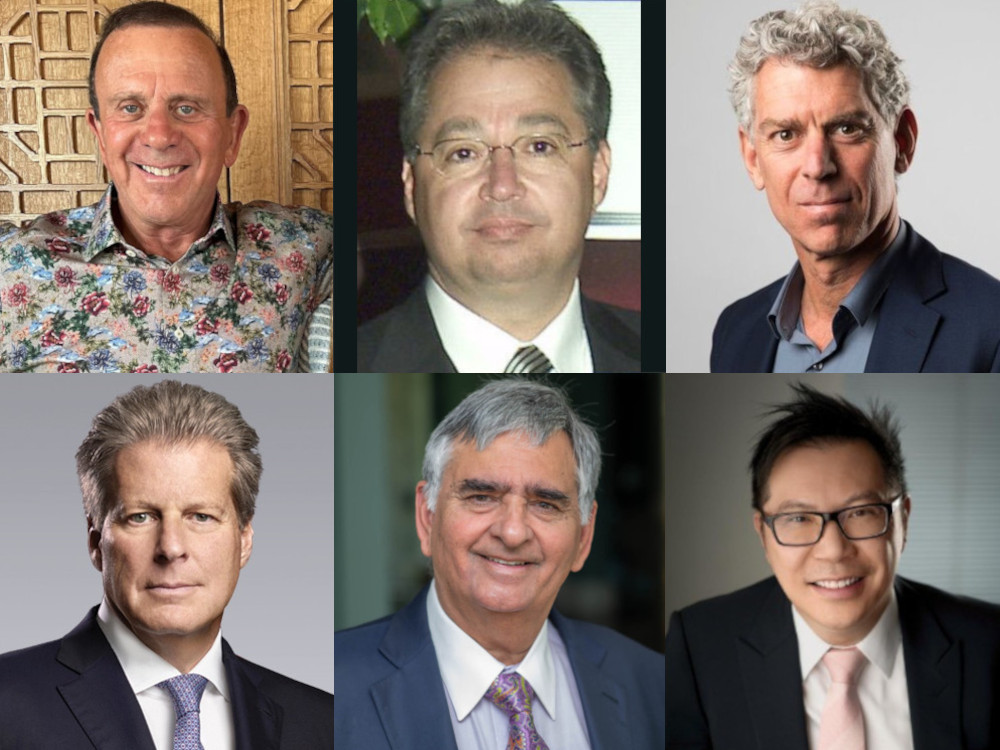This article is the second in our special report Outlook 2026, which puts 2025 in the rear-view mirror and spotlights challenges expected in the year ahead. See the first article here.
These days, we could all use a security blanket, at least some kind of buffer amid the onslaught of jarring news—from tariffs and currency swings to equity markets still juiced on a narrow band of tech stocks.
For Riley Phillipson, chief investment officer at Access Family Office Corp. in Mississauga, Ont., the challenge is to make sure clients don’t throw risk management out the window, even when a younger family member comes to the dinner table talking about how high their crypto coin has risen.
“I think when there are these pockets of froth in the market and seemingly everything goes up, and gold is going crazy, it’s so easy to just ignore why risk management exists,” Phillipson says. Even stoic investors may find it difficult to toe the line on risk when it feels like they’re missing out.
“We’ve had a lot of those conversations this year,” he says.
Part of the difficulty is that standard practices, such as passively following an index, can have less-than-standard outcomes. Where once the S&P 500 represented the broad economy, it’s now tech-heavy, with technology stocks comprising around a 36 per cent weight in the index in early November, according to Reuters, citing S&P Dow Jones Indices.
It’s maybe a time to be a little bit more defensive rather than offensive right now.
Wayne Kozun, co-chief investment officer at Forthlane Partners
Risk assessments will tell you it’s unwise to follow an index with so much exposure to one sector, but it’s hard to fully understand that risk “if you are just looking at the headline S&P 500,” and watching it gain, Phillipson says.
Meanwhile, secure, stalwart stocks, “the boring dividend payers,” have lagged. It’s a conundrum that has been top of mind with clients, especially with the second and third generations in wealthy families, some of whom may not even remember a time when stocks fell, he notes.
Drop in U.S. dollar
From an even larger macro perspective, Dimitri Douaire, chief investment officer at Patrimonica in Montreal, notes that one of the biggest challenges in 2025 was the sudden decline in the U.S. dollar during the first half of the year.
“For over a year, we developed concerns about the risks that some U.S. presidential policies posed to the U.S. dollar,” he said by email. To manage that U.S. risk, Douaire notes, Patrimonica’s investment position included global equity funds and global fixed-income funds in Canadian-dollar-hedged versions.
Heading into 2026, though, he sees signs of conditions settling.
“For the time being, monetary easing looks set to continue. We will likely see more rate cuts, more Treasury bonds purchased by banks and more fiscal expansion. All of that seems to be conducive for further earnings growth and keeping corporate default rates low. That is,” Douaire adds, “until the bond market vigilantes decide that enough is enough, at which point financial markets might become far more sensitive to negative headlines.”
In short, the aim is to stay the course, for now. “Pretty much everywhere, we are not recommending major shifts in portfolio allocations both within and between asset classes,” he says.
U.S. vs. the rest of the world
Canadian Family Offices’ year-end 2025 report gives a sense of how deeply family offices are invested in assets outside Canada. On average, 84 per cent of their clients had more than 30 per cent of their holdings in investments from outside Canada. (The report, “The Multi-Family Office Landscape in Canada 2025,” is now available to Canadian Family Offices’ newsletter subscribers and is to be released widely next month.)
The U.S. still had a strong pull on Canadian investors in 2025, yet the survey also found that 44 per cent of multi-family offices expect to decrease allocations to U.S. assets. (The report surveyed about 80 Canadian multi-family office respondents and was conducted between June and September 2025.)
By owning certain Canadian securities, you can get really good global diversification despite the fact that they are trading on the Toronto Stock Exchange.
Riley Phillipson, chief investment officer, Access Family Office Corp.
Perhaps a little worrying is that 58 per cent of multi-family offices feel that a recession is somewhat or very likely in Canada over the next 12 months. Yet, only 7 per cent see inflation as a “great concern,” even though inflation can of course be a factor in recessions. Instead, their top concerns were Canadian tax rates, AI and cybersecurity issues, and U.S.-Canada relations.
Adding new layers of risk are tariffs and the Trump administration’s interference in the levers of the market, unthinkable just a short time ago. As a result, “we have held less U.S. exposure for our clients over the last couple of years,” says Wayne Kozun, co-chief investment officer at Forthlane Partners in Toronto. Then conditions turned topsy-turvy with the U.S. dollar’s weakening.
“If, again, I told you a year ago that the U.S. is going to be imposing these tariffs on Canadian goods, you wouldn’t have said that the Canadian dollar is going to be 7 per cent stronger than where it was. But that is in fact what happened” earlier in 2025, Kozun says. Yet, the U.S. dollar has since been bumping around, showing some resilience and adding more turbulence and currency risk.
“We’re certainly in a period of transition,” he says. “It’s maybe a time to be a little bit more defensive rather than offensive right now.”
Copper and other hard assets
Kozun notes his fondness for tangible assets such as metals and mining.
“Related to that are derivative plays off of AI. For example, copper. The buildout of all of these data centres and the increase in electricity generation requires a heck of a lot of copper. So, we think that could be an interesting area. We think, in general, hard assets are something that may make sense.”
Private investments, such as those tied to the infrastructure sector, are another option. Yet here, too, investment managers note the importance of communicating the risks to clients.
“It’s definitely an area where it’s by no means a replacement for government bonds,” says Phillipson at Access, adding that if a risk-free yield on a bond is around, say, 2 per cent, and the gross yield on a private credit asset is 10 per cent, clients need to understand that extra risk.
“I see a lot of advisors using private credit in place of a government bond. They are looking at the return units, and not necessarily at the risk associated with those return units,” Phillipson says. “Is there a place for it? I’m sure in some cases, but I just don’t think it’s the panacea that has been advertised to a lot of investors.”
He also notes that instead of U.S.-dollar-denominated assets, Canadian companies with global reach can provide additional ways to invest broadly.
“One example may be Couche-Tard [the international convenience store company], where it earns its revenue all over the world,” he says, “a lot in the U.S., but it’s domiciled in Canada.”
“And so we actually go through all of our holdings, and we break apart where they are producing their revenue. And we actually find that by owning certain Canadian securities, you can get really good global diversification despite the fact that they are trading on the Toronto Stock Exchange,” Phillipson says.
“That’s a big message that we’re trying to convey. It’s really this idea of fighting the urge to be sexy or different or anything like that,” he says, “and just remember that risk management plays a role.”
Guy Dixon began his career at Dow Jones Newswires in New York before joining the Globe and Mail, covering financial markets, business news, the arts and other topics over the years. He has written for the CBC and The Walrus among other publications.
The Canadian Family Offices newsletter comes out on Sundays and Wednesdays. If you are interested in stories about Canadian enterprising families, family offices and the professionals who work with them, but like your content aggregated, you can sign up for our free newsletter here.
Please visit here to see information about our standards of journalistic excellence.




